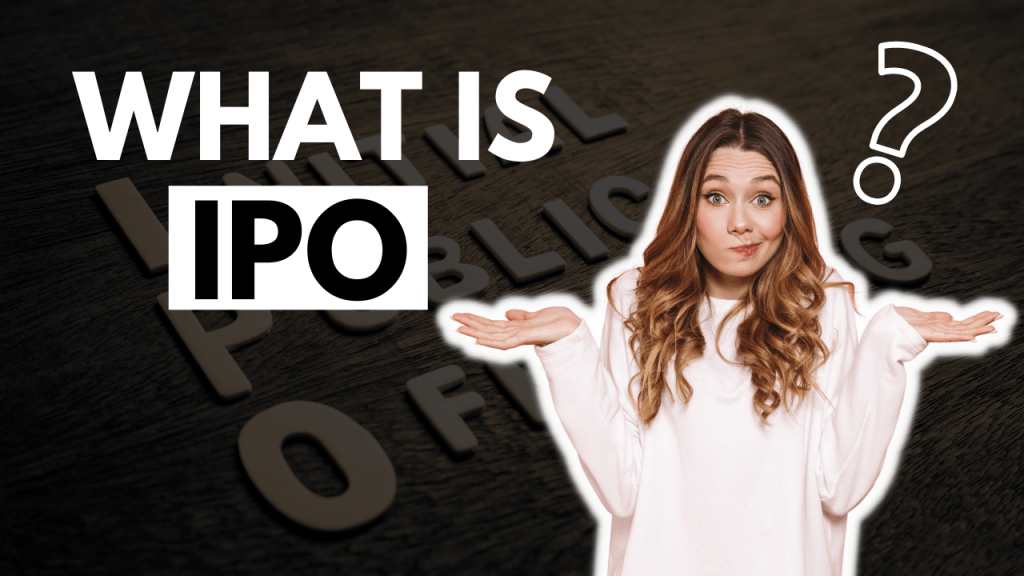
An Introduction to IPO
In business, launching a new product or service can be extremely challenging, especially if you are a first-time entrepreneur. To get your company going, you need to know where to start and what steps you must take to make your dream become a reality.
One of these steps involves taking your company public. By creating and issuing shares of stock so that investors can purchase them.
This process is known as an initial public offering (IPO). Also sometimes referred to as going public to distinguish it from other capital raising tactics such as private placements or venture capital fundraising efforts.
As an entrepreneur looking for funding, learn how IPOs work and whether they are right for your business. Is key in determining which path will help you reach your goals faster.
What is an initial public offering?
Business owners sell the stock of their company to investors when they go public. The company went from being privately owned to offering stock that can be traded on the stock market. This is called an initial public offering, or IPO.
It gives the business access to capital that can be used to grow the company. So how does an IPO work? What are some of the factors involved?
Read this article to find out.
Here are seven quick points on what an IPO is, who qualifies to pursue one and why businesses typically choose to use an IPO instead of other funding methods:
What exactly does IPO stand for?
IPO stands for initial public offering. which refers to when a privately held company begins selling its own shares on one of many different stock markets.
Generally speaking, firms do not typically go through with IPO offerings until their operations have been running strong for at least some years.
Why do companies go through with IPOs in general?
There are several reasons why companies decide to launch an IPO. Some include Raising more funds, filling a sudden hole in cash reserves or fulfilling contractual obligations to external parties wanting share price appreciation.
The goal of an IPO is to raise money for investors and give companies more cash so they can pursue long-term growth initiatives.
Who can launch an IPO?
While conducting an IPO requires substantial amounts of time and energy. Those outside entrepreneurs hoping to conduct IPOs should weigh their options before making any decisions.
Many company owners may think they’re ready to go public without considering all their alternatives first. There could be hidden costs that might make pursuing private placements less risky for certain types of organizations or individuals.
How does an IPO differ from other forms of capital raising?
It is worth pointing out that IPOs provide startups and existing companies with potential access to much-needed startup money. They aren’t always the best option available.
Since businesses seeking to sell ownership shares during an IPO. Often have very little equity already established, they face many risks prior to even seeing profits roll in.
How does an IPO happen?
An initial public offering (IPO) occurs when a private company becomes publicly traded. It allows investors to buy shares of stock, or equity, in a company for the first time.
During an IPO, a business typically sells stock to institutional investors and may be listed on major exchanges. Prior to going public, most companies must follow strict regulations set by federal and state securities agencies. Filing with these regulatory rules and providing detailed information about officers, directors and shareholders.
One benefit of registering with these agencies is access to investment banking services that help you prepare for your IPO while helping investors understand what they’re buying.
The entire process of taking a company from private to the public can take many months and often involves heavy research from investment banks.
When can I buy the stock?
An initial public offering, or IPO, is a time when a company sells its stock to investors for the first time. This allows other people to buy shares in your company and gives them a chance to share in its future success.
A good way to start understanding IPOs and when you can invest in one is by considering how it compares with another type of investment.
When you buy shares of stock on a stock market, you’re purchasing part ownership in that business. So if you are willing to take the risk associated with the company then you can buy the shares from the stock exchanges the company listed its IPO.
( If you wish to watch an animated explainer video explaining this topic – CLICK HERE )
Where can I find more information about the company doing the IPO?
Here’s a good rule of thumb: if you are thinking about buying shares in a company during their IPO, make sure you have done thorough research on that company. This is especially true for younger companies or firms in emerging industries.
The problem with investing in these companies is, that there isn’t enough data out there to conduct a thorough analysis. If you buy into one of these companies without having done your homework, your risk of failure increases significantly.
IPOs are a hot topic in today’s business world. For business owners looking to take their company public, there’s plenty of information out there. About exactly what IPOs are and how they work. If you don’t have experience with IPOs, though, it can be hard to understand exactly what goes into one.
This introductory guide to IPO shares enlightens you with a broad overview. What are IPO and some of their most important aspects. We hope you got a basic understanding of how IPOs differ from other methods of fundraising for small businesses and more.
